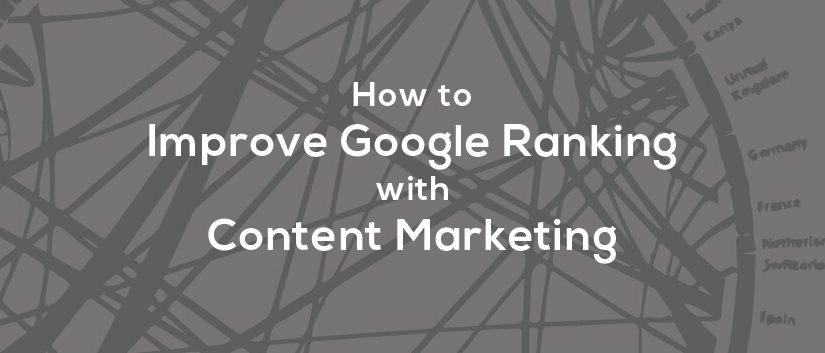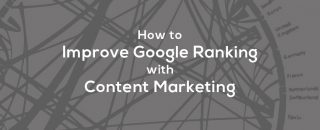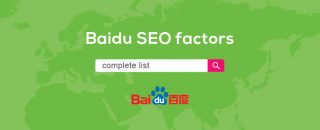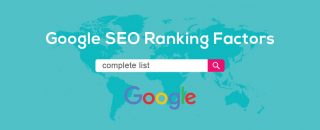How to create an effective strategy of content marketing in 7 easy steps
While Google regularly releases new updates to its search algorithm, SEO becomes ever more complex and the risk of incurring penalties is getting higher. In this article we will see how to structure a simple content marketing strategy to improve the ranking on Google and generate leads in the post Penguin and PBN de-indexing era.
Placement of keywords in the SERP check
Among the premium solutions we love to use MOZ Pro and SemRush, but definitely viable alternative is Ahrefs.
If we are looking for a free software instead we can rely on WhatsMySerp, which offers to its users the ranking test of keywords with no limits, the chance to save and verify the trend over time. Alternatively we can use the rank cecker of Serps.

Loading speed check
It is also relevant as key factors in user experience: the loading speed has a direct influence on the conversion rate and bounce rate.
For this test we can use either the free SEO tool offered by Pingdom, or GTmetrix.

Website health status check
Objectives evaluation
Setup of Google analytics tols
Setup of the conversion goals
Open Analytics in “real time” mode at “conversions” and verify that, by filling out the form, an active X user who has made a conversion is showing up. If that works, we return on Analytics admin page and create a filter that excludes our IP.
Google Keyword Planner
The instrument will recommend us a variety of keywords that we will select based on the two parameters in the columns “average monthly searches” and “competition”.
The goal is to find the search keys with low/medium competition and a good average of monthly searches. To be precise, the keywords with low number of monthly searches are typically formed of several words, called long-tail keywords, an excellent resource for reaching easily well-targeted traffic and easy placement.
Spy on competitors
From a mere technical point of view, the benefits coming from using an internal blog are the following: creating direct traffic flow, increasing indexed pages, link juice, mean residence time, percentage of returning visitors and highly probable to increase the avarage number of pages per visitor. On the other side, these are internal links and not backlink.
As regards the contents, instead, we have limits because we are talking about branded contents.
Basically, it is possible to create information and advertising contents but it is not possible to create benchmarking articles including opinion about the services offered.
Creating a content net represent a good solution that frees us from the constraints of the brand and offers a good opportunity to create backlinks. The only flaw is that it is necessarily to pay attention to the Penguin and PBN de-indexing updates.
First of all we have to avoid that the two websites are hosted on the same server, having the same IP or being registered under the same person.
It can be trivial to say, but it is important to remind you that valid contents must have:
uniqueness, quality, quantity.
Such contents will more easly appeal new visitors, fostering the social sharing and valid backlinks.
From keywords to content
We can give ample space to our creating writing or look online articles that have generated and constantly generates traffic or we decide to rely on BuzzSumo.
BuzzSumo is a premium software that I really recommend for who deals with content marketing.
It allows to find articles that generates more traffic and sharing through keywords and topic, filtering them by publishing date, social platform where shared, content type, geographic area and language.
Find content in Google
Can we do better?
If so, let’s start working on it. Do not forget that the most shared contents are tutorials, infographics, and lists (More: Content Marketing: which content marketing fits best your needs?).
Write an attractive title
Here some tips:
using numbers in the lists, I.e “6 easy marketing strategies for a successful e-Commerce”
or “Web Marketing: How I have increased visits over a week by 300%”
stimulate curiosity,
I.e. “Matt Cutts reveals the 5 secrets of Penguin update”
Font and font dimension
it is necessary to adapt it to the target and content.
I would not use Helvetica (used in this article) to talk about ayurvedic medicine and I would not use Times to talk about last generation laser technology. I will avoid too small fonts that I would calibrate on the basis of professional and cultural level of target.
If I have to write and article about the magic drink that makes you lost 5 pounds in a week(…I speak for experience but do not judge me), I will use large letters, high contrast title, sutured colors.
Images
Further images are a good SEO tool that travel on a separated channel (Google image) and are useful to reach high competitive fields of positioning.
It is possible to realize entire strategies based on images. An example is the blog about art events curated by our editorial staff: Katarte, with more than 1000 images indexed on the first position in Google Images.
Call to Action (CTA)
A quick introduction, an analytical discourse divided into sections, finally a conclusion. If we have attracted user’s attention, we involved him or helped him in solving a problem, we convinced him to be a trustful interlocutor, and will be be predisposed to contact us.
Declaring the offer of your service or the reason for the contact request at this point will allow a possible conversion .
It’s time to play the card of the Call to Action :
Are you a Blogger? Are you Passionate about SEO?
Tell us about your content network and discover how to collaborate with the Simpliza team
The secret lies in intercepting the intentions of our target users and create appropriate content that same users will be prepared to consume, and persuad them to get into the funnel that will lead to our objectives, which is the purchase of a product, the download of a game, or (as in this case) the invitation to the discussion or the contact.







